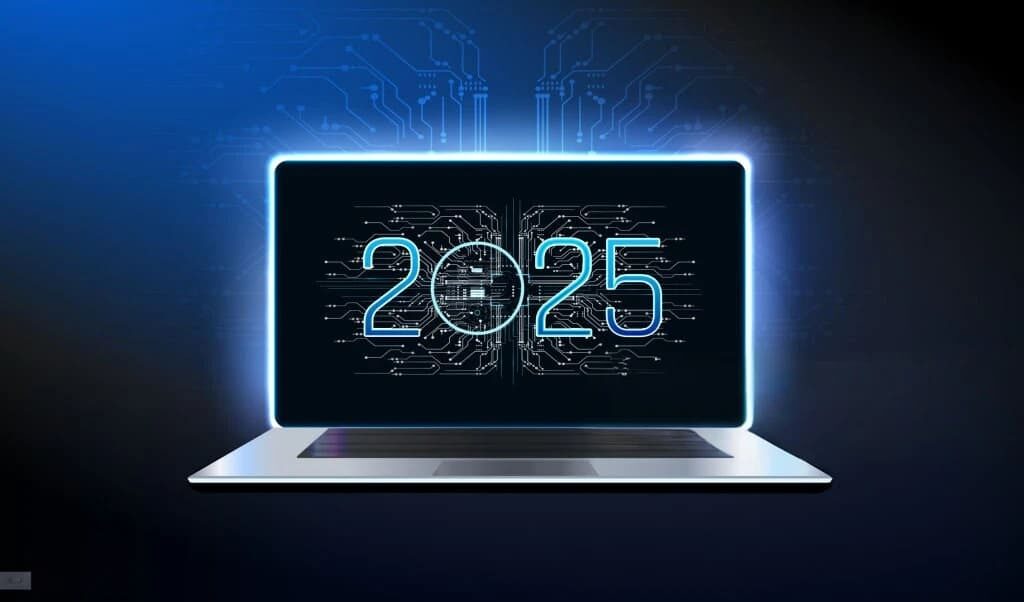1. Understanding the Web Development Revolution and Its Impact
The field of web development is constantly evolving, with new advancements and technologies shaping the way we create and interact with websites. One of the most notable changes in recent years is the integration of artificial intelligence (AI) into web development processes. AI has the potential to revolutionize the way websites are designed, developed, and maintained, offering enhanced personalization, improved user experiences, and streamlined development workflows. In this blog, we will explore the current state of web development, the role of AI in shaping its future, and what we can expect to see by 2025. So, if you’re curious about the upcoming web development revolution, keep reading!

2. Current Trends Shaping the Future of Web Development
As we look towards the future of web development, it is essential to understand the current trends that are shaping this rapidly evolving field. Several key factors can significantly impact the way websites are crafted and experienced. In this section, we will explore some of the most influential trends that are driving the future of web development.
One significant trend is the increasing demand for mobile responsiveness. With the rise of smartphones and tablets, users expect websites to adapt seamlessly to different screen sizes and resolutions. Mobile responsiveness is now a non-negotiable requirement, and web developers must prioritize creating websites that provide a seamless experience across all devices.
Another important trend is the focus on speed and performance. In today’s fast-paced digital world, users have little patience for slow-loading websites. They expect instant gratification and immediate access to information. As a result, web developers are constantly exploring ways to optimize performance and reduce load times.
Additionally, the need for enhanced security is driving the future of web development. With the increasing number of cyber threats, websites must be built with robust security measures to protect sensitive data. Developers are investing in secure protocols, encryption, and implementing measures such as two-factor authentication to ensure the safety of users’ information.
Furthermore, the rising popularity of voice search and smart devices is influencing how websites are designed. As voice assistants like Alexa and Siri become an integral part of our lives, website developers need to consider voice search optimization and create user interfaces that seamlessly integrate with smart devices.
These trends are just a glimpse of how the web development landscape is evolving. In the next section, we will delve into the role of artificial intelligence in shaping the future of web development. Stay tuned to discover how AI is set to revolutionize the field by 2025!
3. The Role of Artificial Intelligence in Web Development by 2025
In the ever-evolving world of web development, one can’t help but wonder what the future holds. One of the most exciting prospects on the horizon is the increasing integration of artificial intelligence (AI).
Artificial intelligence has already made significant strides in various industries, and it is set to revolutionize web development as we know it. By 2025, AI is expected to play a vital role in creating smarter websites and enhancing user experiences.
One aspect where AI can have a profound impact is in the realm of personalization. With AI-powered algorithms, websites can gather and analyze user data to provide personalized content and recommendations. From tailored product suggestions to customized user interfaces, AI can create experiences that cater to the unique preferences and needs of individual users.
Another area where AI can make a substantial difference is in website design. AI-powered tools can generate designs, layouts, and color schemes based on user preferences, industry standards, and best practices. This streamlined design process not only saves time for developers but also ensures that websites are visually appealing and user-friendly.
Furthermore, AI can play a crucial role in automating mundane and repetitive tasks in web development. Whether it’s generating code snippets, testing and debugging, or content management, AI can take over these time-consuming tasks, freeing up developer time and resources for more complex and creative work.
Another exciting application of AI in web development is in the field of chatbots and virtual assistants. These AI-powered conversational tools can handle customer inquiries, provide support, and even make suggestions based on user input. The integration of AI chatbots into websites can greatly enhance customer service and create more interactive and engaging user experiences.
As we move towards 2025, the role of AI in web development will only continue to grow. While there are concerns about job displacement and ethical considerations surrounding AI, there is no denying the potential it holds for pushing the boundaries of web development.
In the next section, we will delve into the emerging technologies that will further shape the future of web development. From blockchain to augmented reality, get ready to explore the exciting possibilities that await us in the coming years. Stay tuned!
4. Emerging Technologies: What Developers Need to Know
As we look ahead to the year 2025, it’s important for web developers to stay on top of the emerging technologies that will shape the future of web development. One such technology is blockchain. Initially known for its association with cryptocurrencies, blockchain has the potential to revolutionize web development by providing secure and decentralized solutions. From secure peer-to-peer transactions to creating tamper-proof digital identities, blockchain offers exciting possibilities for developers.
Another technology to keep an eye on is augmented reality (AR). AR has already started making its mark in mobile applications, but its potential for web development is immense. Imagine a website that allows users to interact with virtual objects in their physical environment, or a shopping experience that enables customers to try on products virtually. AR has the power to transform the way we engage with websites and create truly immersive experiences.
Alongside blockchain and AR, web developers should also be aware of the Internet of Things (IoT) and its impact on web development. With the ever-increasing number of connected devices, websites will need to adapt to accommodate IoT technologies. This includes creating responsive designs that can be accessed on a wide range of devices, as well as developing efficient ways to collect, analyze, and utilize the vast amounts of data produced by IoT devices.
Lastly, machine learning and data analytics will continue to play a crucial role in web development. By harnessing the power of data and predictive algorithms, developers can create websites that adapt to user behavior, anticipate user needs, and provide personalized experiences. Integrating machine learning capabilities into web development processes will not only enhance user satisfaction but also optimize business outcomes.
As we look towards 2025, it’s clear that web development is set to undergo a revolutionary transformation. By staying informed about emerging technologies like blockchain, AR, IoT, and machine learning, developers can prepare themselves to leverage these advancements and stay at the forefront of their field. The next section will dive deeper into each of these technologies, providing practical insights and examples of how they can be implemented in web development. Stay tuned for an exciting exploration of the future of web development!
5. Enhancing User Experience: Predictions for Design and Functionality
The future of web development in 2025 will see a significant focus on enhancing user experience through innovative design and functionality. Design trends are predicted to shift towards minimalistic and user-centric approaches, with a strong emphasis on usability and accessibility. Websites will be designed to cater to a wide range of devices, including mobile, desktop, and wearable devices, ensuring a seamless experience across platforms.
In terms of functionality, personalization and customization will be key. Websites will leverage machine learning algorithms to analyze user data and deliver personalized content, recommendations, and experiences. This will result in increased user engagement and satisfaction.
Furthermore, websites will incorporate advanced interaction techniques, such as voice and gesture controls, to enhance user engagement. Virtual reality (VR) and mixed reality (MR) technologies will also become more prevalent, allowing users to experience websites in immersive and interactive ways.
As web development continues to evolve, the focus will be on creating websites that not only meet the needs of users but also exceed their expectations. By embracing these predictions for design and functionality, web developers can create a future where the user’s online experience is truly exceptional. Stay tuned for the next section, where we will delve into the details of these predicted advancements and how they will shape the future of web development. It’s an exciting time to be a web developer!
6. Preparing for the Future: Skills Developers Should Focus on
As we look ahead to the future of web development in 2025, it’s important for developers to start preparing now by acquiring the necessary skills to thrive in this rapidly evolving landscape. The demand for developers with expertise in user experience (UX) design and usability will continue to grow, making it essential for professionals to invest time and resources into mastering these areas.
In addition, with the increasing focus on personalization and customization, developers should familiarize themselves with machine learning and data analysis techniques. By gaining a solid understanding of how to collect and interpret user data, developers will be able to create personalized experiences that truly resonate with their audience.
Furthermore, as interaction techniques continue to advance, developers should explore emerging technologies such as voice and gesture controls, as well as virtual and mixed reality. By equipping themselves with the knowledge and skills needed to implement these features, developers can stay ahead of the curve and deliver cutting-edge experiences to their users.
In the next section, we will explore the specific skills and techniques that developers should focus on to ensure they are well-prepared for the future of web development. Stay tuned as we dive into the details and provide actionable insights for developers to stay at the forefront of this ever-evolving industry.
7. Conclusion: Embracing Change in Web Development for Success by 2025
As the web development industry continues to evolve at a rapid pace, staying ahead of the curve is crucial for professionals looking to thrive in this digital landscape. In this blog series, we’ve discussed the importance of acquiring new skills in areas such as UX design, usability, machine learning, and data analysis.
With the increasing emphasis on personalization and customization, developers must familiarize themselves with these trends and implement techniques to collect and interpret user data. This will enable them to create tailored experiences that leave a lasting impact on their audience.
Additionally, developers should explore emerging technologies like voice and gesture controls, as well as virtual and mixed reality, as these innovations are set to shape the future of web development.
In conclusion, to succeed in the web development revolution by 2025, professionals must embrace change and continuously update their skill set. By staying curious, adaptable, and proactive, developers can position themselves as leaders in this ever-evolving industry. Stay tuned for the next section, where we’ll provide actionable insights and specific techniques for web developers to future-proof their careers.


